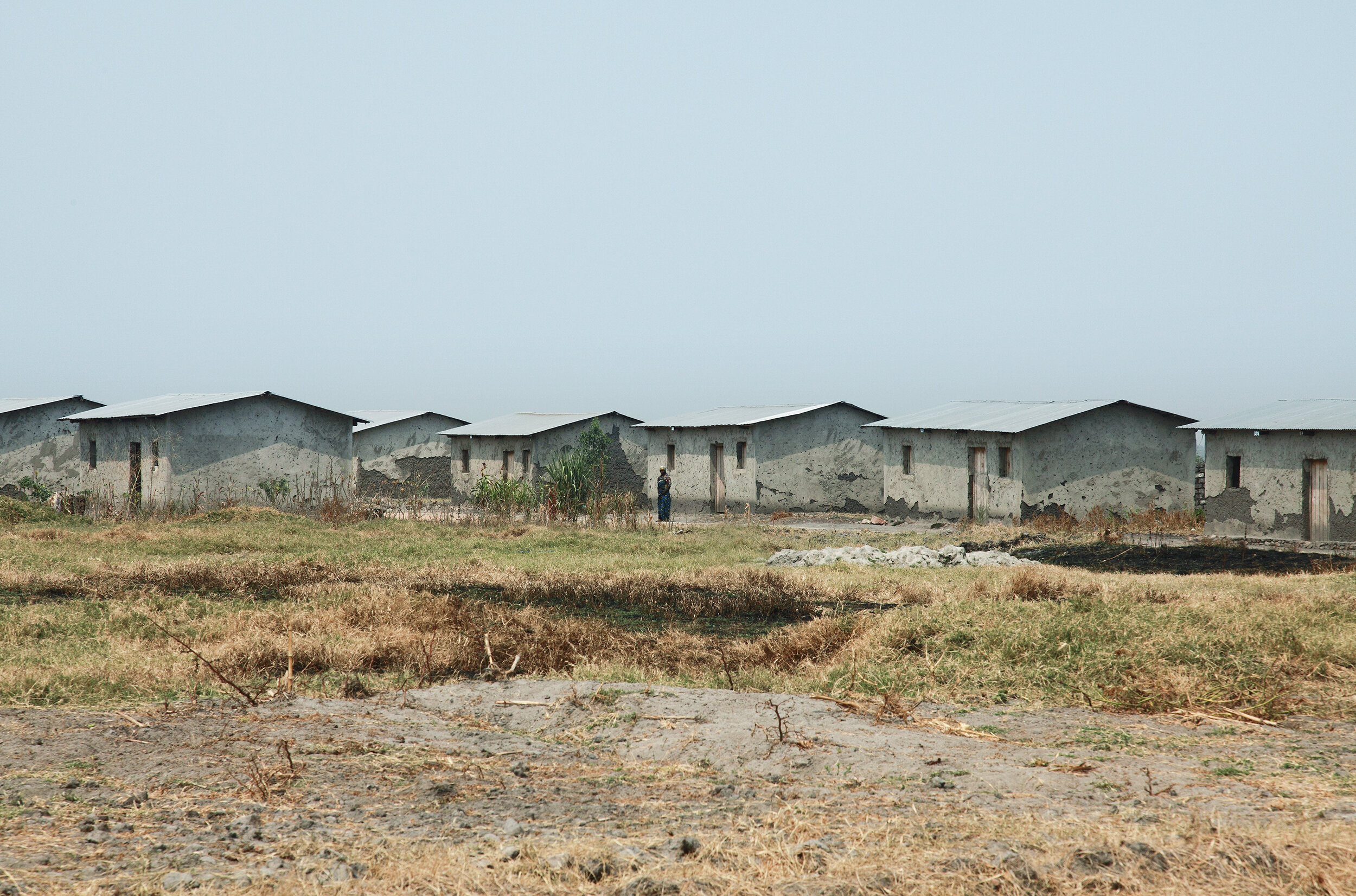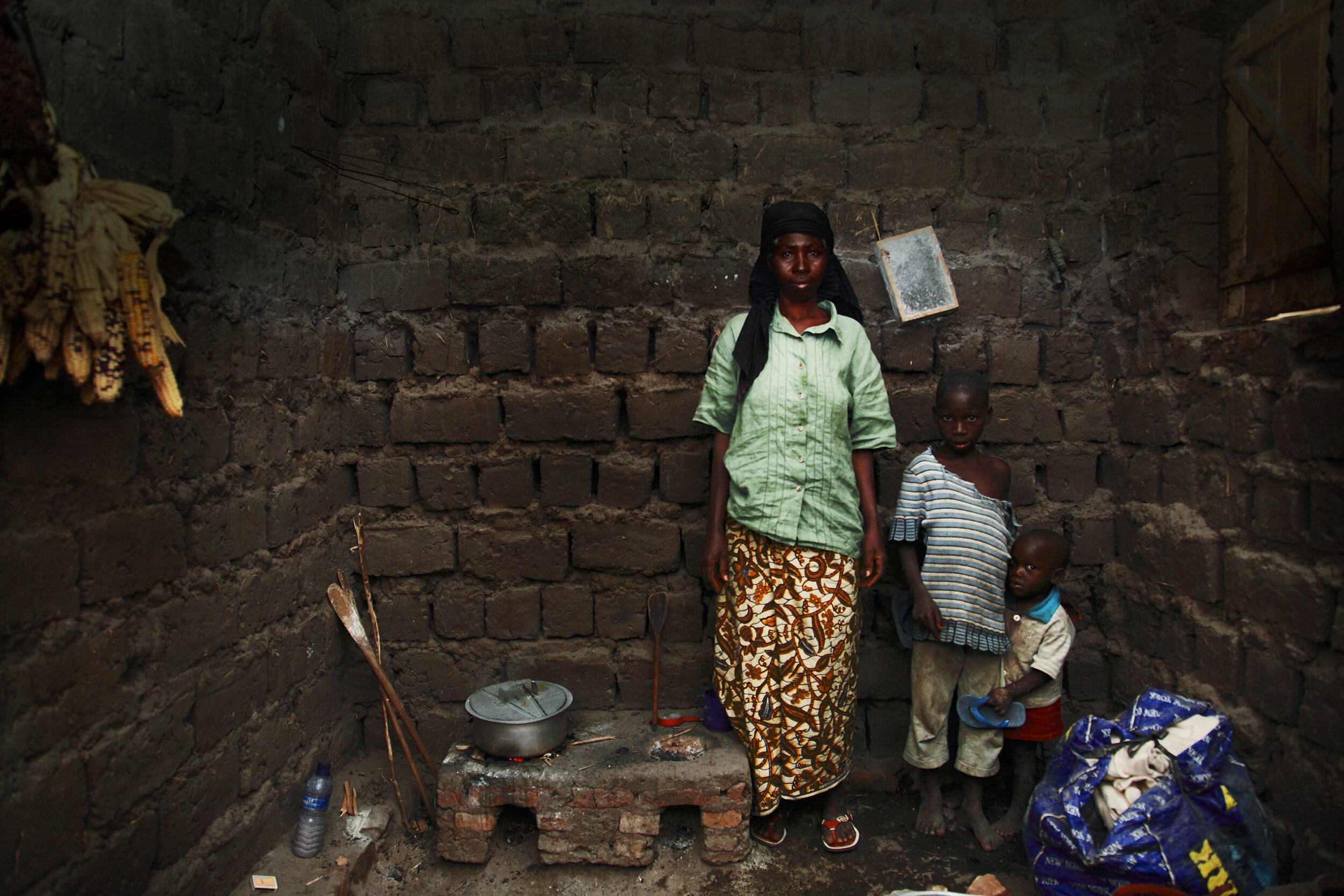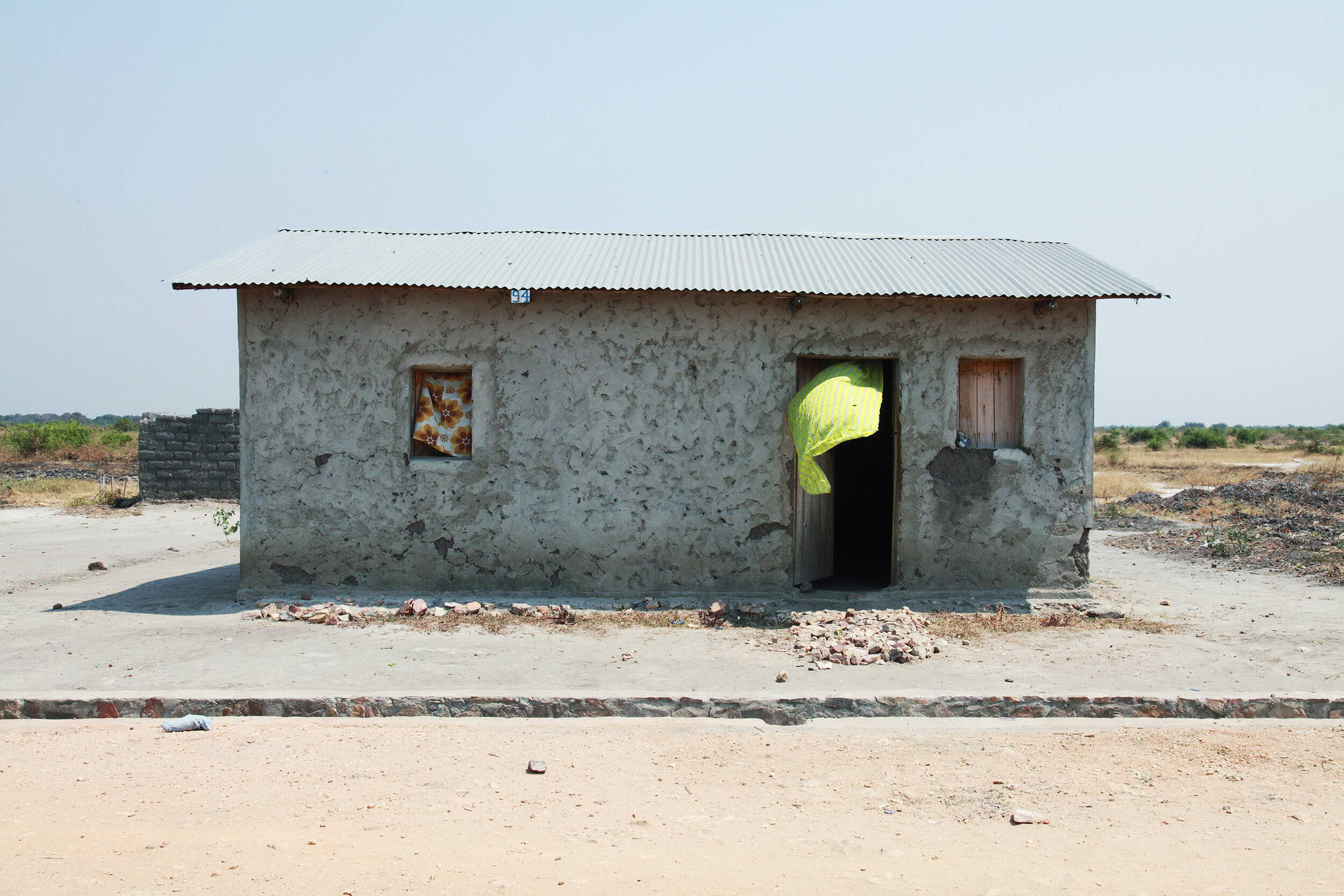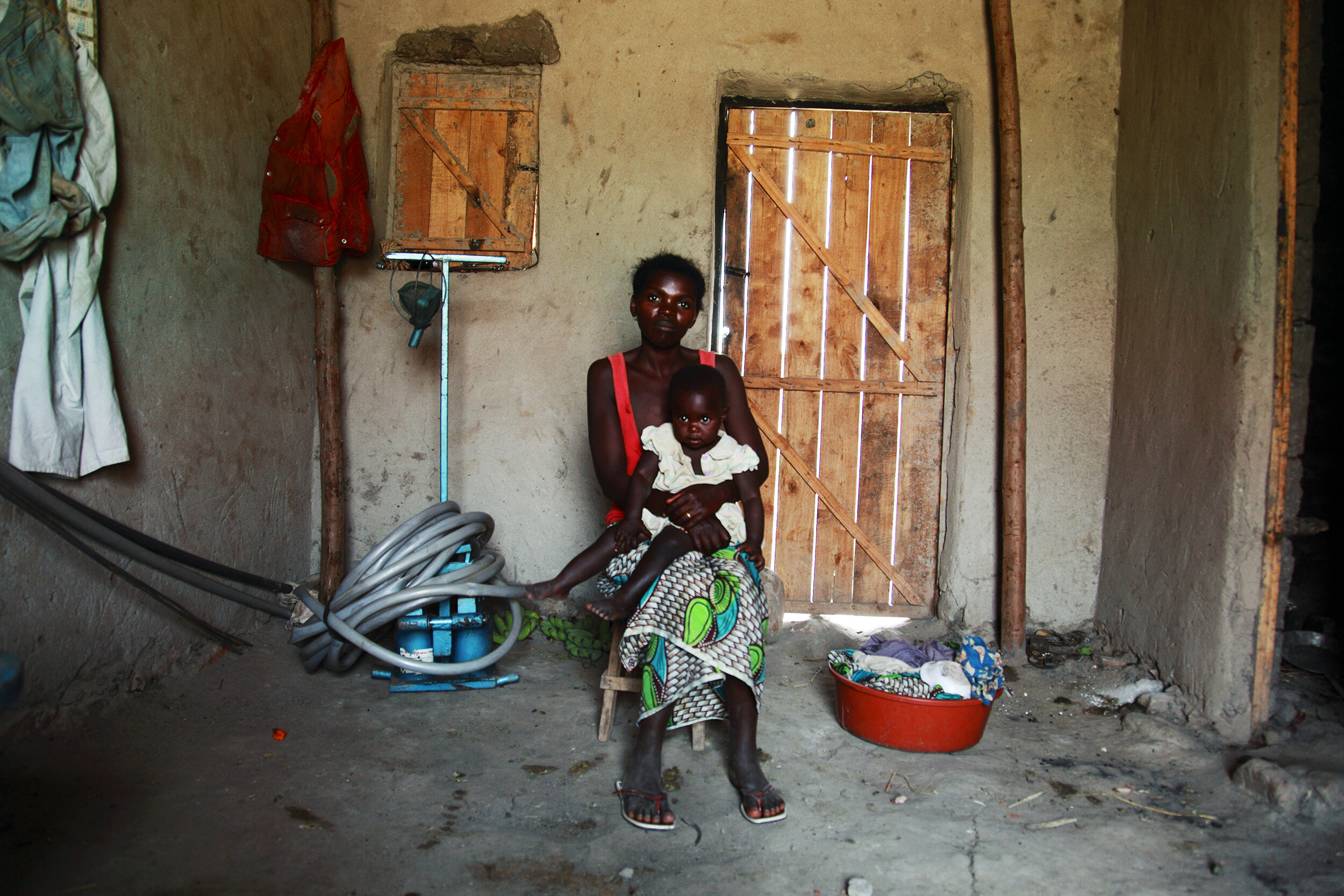
Elysean fields
Buhomba repatriate camp is 50km away from Burundi`s capital Bujumbura. In 2008 this area awas a rebel stronghold in which people from other areas of the country would not dare enter.
Approaching Buhomba repatriate camp across the plain, its corrugated aluminium roofs shimmer as if a mirage. Waves of heat beat up off the earth, suspending children’s kites fashioned from string and straw and plastic bags that twist and glimmer. Sideways, paper-thin, the kites are invisible, secured by an unperceivable thread to the dust below. The tin roofs of the houses are tied down to boulders with bicycle chains. In a wasteland once the stronghold of rebels, these shacks are hidden from the rest of Burundi. In the world’s third poorest country, they are invisible to the rest of the world. Those who live in Buhomba hide from the sun in uniform grey mud houses. From the road, there is no one here.
The camp is home to 450 returned refugees who fled Burundi and the Hutu-Tutsi massacres of 1972 and 1993 and are now returned from Rwanda, Tanzania, Congo and Sudan, bringing children born abroad and memories of their families who died in this country. Having left Burundi so long ago, many no longer remember where their family was from; with no home to return to, they are herded into government-built camps. “At least in the refugee camps we had food,” says Alina, born in Congo to refugee parents. “Here, the government give each person 25kg of maize or peas, and that must last six months. We eat once a day, or sometimes go without. When once they forgot to send food, we marched on foot to the Ministry to demand it.” Without money to pay for books and uniforms, Alina’s children join her working in the fields of others rather than going to school. A day’s work can earn 500 Burundian francs (27cent), enough for a handful of tiny dried fish.
Tanzania’s forced closing of its refugee camps has pushed thousands of Burundians across the border to their homeland, to days spent in sun-beaten lines outside administrative offices seeking help to build homes. The roads are lined with bricks hewn out of the red earth; with no seeds to plant, people sell their land thirty centimetres at a time. Yet few can afford these luxuries, with many of the 700,000 new arrivals living in makeshift shacks of straw and ubiquitous UNICEF tarpaulins. Those in barren Buhomba, though their children gnaw leaves for sustenance, are the lucky ones.
Though the camp is surrounded by empty land, its inhabitants are forbidden from sowing the cassava or sweet potato that they tend in other people’s fields. Elizabeth looks out of the doorway of the house she shares with her eight children, her eyes following the straight line of houses to the wide and dust-covered plain that surrounds them. Hungrily, she watches its straws rustle. “To grow, that would be another life. The morning I have my own land, that will be another world.”
Text by Laura Gabrielle Dix



























